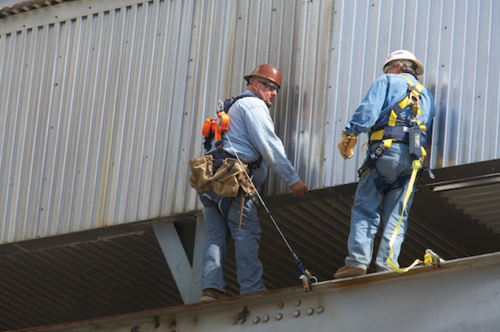Keeping Your ANSI Z359 SRLs Compliant
ANSI Z359.1 was published in 1992 and approved a scant 15 years later. Slowly grind the wheels of progress. And ANSI Z359 is progress in terms of worker safety, even if it is going to cost more money in the short run. Greater regulation of worker safety almost inevitably means increased administrative work and expense for employers, compliance provides improved safety for workers and increased protection against litigation. Certainly these are both worthy goals, whether you're working in the public or the private sectors.
So how do you get compliant and stay that way? Meeting ANSI Z359.1 standards means not only buying the right equipment (it will be stamped with "Z359"), but also making sure the equipment is regularly inspected.
The Z359.1 standard deals with the production of the devices, load capacities, and a million other details. What you need to know is how to stay current. The equipment you need to keep track of are your harnesses, lanyards (including self-retracting lanyards), lifelines, anchorage connectors, and other fall safety equipment.
For SRLs the inspection regulations depend on how often the devices are used. For regular, everyday use with fairly good storage conditions, the SRLs need to be inspected by your competent person (and not just the fourth best guy you have on-site that afternoon, but someone who meets OSHA requirements for a Competent Person) once or twice a year. The units need to be sent in for factory authorized inspections at least every 1-2 years, but not to exceed manufacturer-suggested elements. This addendum about not exceeding manufacturer recommendations will go for all the level of usage.
Sites that are using their SRLs constantly or very often, and in extremely rugged environments, such as commercial construction, oil & gas production, mining, or areas like that are required to have their competent person inspect the units quarterly or twice yearly, and send them in for factory inspection at least yearly.
Infrequently used equipment still needs to be inspected annually in-house, and every 2-5 years (again no longer than recommended by the manufacturer) by a factory-trained tech.
There will be expense. Not only will the equipment be slightly more expensive, but you'll need to have replacements handy while the primary SRLs and other equipment are being serviced. The hope is in the long run increased worker safety will decrease not only the on-the-job injuries, but time off for injuries, and the eventually the overall cost of doing business. For now, buckle up and try to organize your reminders.
Recent Posts
-
Customizing Gas Detectors: Tailoring Solutions to Fit Your Unique Requirements
In today’s diverse industrial landscape, a one-size-fits-all approach to safety simply doesn’t cu …Jul 3rd 2024 -
10 Ways to Prevent Wildfires
You can prevent wildfires by extinguishing flames before you leave the worksite. Avoid practicing …Jul 1st 2024 -
ANSI/ISEA 138 Safety Gloves: Ensuring Hand Protection
The human hand is an anatomical masterpiece and arguably the greatest tool attached to our bodies …Jun 25th 2024





